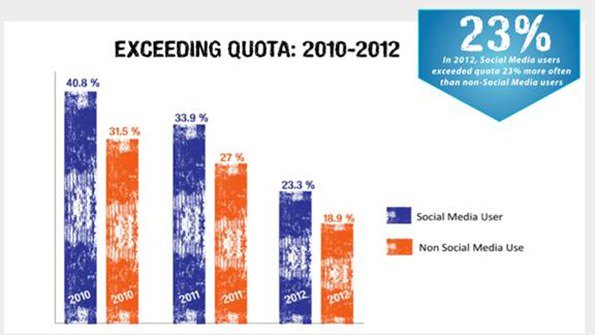You are viewing our site as an Agent, Switch Your View:
Agent | Broker Reset Filters to Default Back to ListFollowing Up is Not a Task, It’s a Lifestyle: 3 Ways to Master the Follow-Up
June 01 2015
 As an Account Executive at Contactually, I often consult decision makers on how to use our relationship management platform in a strategic way. We often use words like "follow up," "being outbound," and "doing outreach" to describe the consistent effort one needs to put into their network in order to strengthen relationships.
As an Account Executive at Contactually, I often consult decision makers on how to use our relationship management platform in a strategic way. We often use words like "follow up," "being outbound," and "doing outreach" to describe the consistent effort one needs to put into their network in order to strengthen relationships.
Many of our customers come away enthused about using a newly refined strategy to begin getting more out of their network. However, an inevitable conversation eventually crops up a few days later when the real challenges of "persistent follow-up" occur.
Let me go ahead and share a certain truism which is the conclusion of this post: Following up successfully is not a task that you perform at some point in your day; it is a round-the-clock effort that is continuously improved over time.
To further expand on this, if you block out a few minutes out of your day to email or call a list of people then you have already lost the follow-up battle.
The simple reality is that when you take a few seconds to think of an email to send someone you may actually be hurting yourself more than helping. Although one may exert a little effort when taking time out of their day to email or call someone, there is still a question of how much value the follow-up provided the recipient with.
After writing two or three follow-ups that were constructed in a few minutes or less, do you think the lead or contact will be waiting in desperate anticipation for the next email you will be sending them?
Keep the Follow-Up Motor Running 24/7
 Unfortunately, sitting down and emailing 5 new people a day will not make you the master of your network — it's a bit more strategic than that. Following up with people is something that is better done when the messaging is centered around value — not the number of words or topics you can squeeze into an email. Consider this scenario:
Unfortunately, sitting down and emailing 5 new people a day will not make you the master of your network — it's a bit more strategic than that. Following up with people is something that is better done when the messaging is centered around value — not the number of words or topics you can squeeze into an email. Consider this scenario:
Mike L. is a VP of Marketing at a local government contractor. In your limited relationship with Mike and from his LinkedIn profile you know that he is an alum of a college nearby. You want to further your relationship with Mike as he is highly regarded among the business community.
Part of your workday is a 10 minute period blocked off for "following up" with contacts that you want to either build or improve your relationships with. As Mike appears as one of those people, you quickly brainstorm for information relevant to Mike's interests – maybe a local current event or some recent news about his alma mater.
Not having any time to think about how valuable what you're saying really is, you shoot of a message like this:
"Hi Mike, it was great meeting you last week at the "State of Downtown" business luncheon. I saw that you're an alum of Brookfield College — good to see that they're moving with the technology incubator project!
It would be great to get together soon and talk a little more about the cross-marketing conversation we had at the luncheon. Maybe there is some potential for us to explore that this spring?
Let me know what you think?"
This is what most people would consider a good follow-up. You made a connection with something you know about them and you offered something that you perceive as being valuable. Now consider the next scenario where Mike and you did not get a chance to meet together, but you're still intent on building the relationship:
"Hi Mike, just wanted to follow up and see how things were going with you. Hope all is well.
Things are picking up on our end — we're still interested in exchanging some marketing/promotional materials if that's something you're open to?
Let me know how things are going on your end!"
Now this is where things start to deteriorate. The above email would be an example of what we refer to as a "hollow follow up."
In every follow-up sent, the first question that should always be asked is, "Does this message bring value to the recipient?" In the first follow up with Mike, the proposal to cross-market is potentially valuable since it was brought up in a previous discussion. However, once it came time for a second follow-up there was not additional value brought to the table. There are a few ways to mitigate this.
How to Master the Follow Up
1. Be Patient
Do not follow up if there is nothing valuable to say — simply wait until you have something organic to say. Perhaps you stumbled upon on some research concerning cross-marketing and you believe it may educate Mike. Maybe, a friend in marketing in another state had a personal experience regarding a similar project that was "shareworthy."
These are the moments that make for valuable communication; the more patience and judgement you can employ, the better responses you can expect to receive.
2. Spontaneity
The best person at the "follow-up" that I know would be a colleague of mine here at Contactually. I personally believe his secret to constant intriguing communication is he always has a medium to share content on at any given moment. Whether it be texting, Facebook, LinkedIn, email, web chat, or whatever, he always seems to have the ability to quickly share content as he comes across it.

Sales people who use social media platforms to engage with their contacts achieve or exceed their quotas over sales people who do not use social media. In the age of the internet, being able to quickly share material on different, real-time platforms is almost essential. Make yourself acclimated with posting content with people on every platform via your phone and make it habit. Those spontaneous shares will delight your recipients and help you stay top of mind with them!
3. Focus on Them
Everyone likes to talk about themselves... which is exactly why you should be talking about them! Don't get caught up filling in the other person what's happening in your life. Instead, ask them some questions they will not resist answering — and then listen to them. This is how getting to know someone works and it will set you up for success on your next follow-up as you make it even more focused and pertinent to what they say and feel.
In conclusion, quality follow-ups take a great deal of effort and reflection. The types of questions that should be asked before sending an outbound message should revolve around things like values, interests, and pain points. In order to address these things, you may have to take more than a few minutes to fully put together an effective message.
With the above principles — patience, spontaneity, and focus — you can ensure that building relationships with consistent and persistent follow-up is optimized!
To view the original article, visit the Contactually blog.









